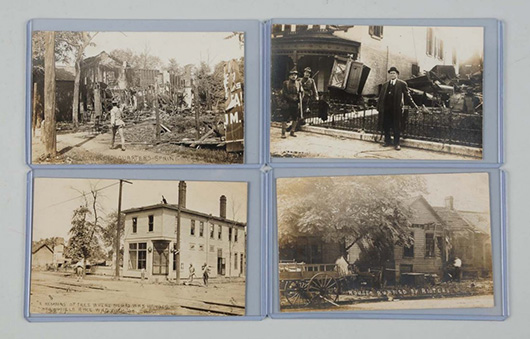SPRINGFIELD, Ill. (AP) – Rail consolidation work has unearthed pieces of a working-class, immigrant neighborhood from the mid-1800s in Springfield, including glassware, dishes, cisterns and seven home foundations.
Five of the seven homes were destroyed at the time of the Springfield Race Riot of 1908, local researchers said Jan. 5.
The foundations were discovered in a 3 1/2-block archaeological dig on the site of the Carpenter Street underpass. Construction of the underpass between Ninth and 10th streets is the first major piece of long-term plans to consolidate Third Street train traffic on the 10th Street corridor.
Research and preservation of historic artifacts are required by state and federal rules for the $20 million Carpenter Street project.
“There were intact house foundations, seven houses in a row,” Floyd Mansberger, principal with Fever River Research, said Monday at the site just east of St. John’s Hospital.
The Springfield firm, which specializes in historical and archaeological research, is overseeing the dig along the west edge of the 10th Street tracks. The area was excavated as part of the Carpenter Street construction and as the future corridor of added 10th Street tracks.
Excavation has been halted for the winter and should resume next spring. Security fences and cameras were erected to protect the site.
Mansberger said research found working-class, immigrant families built the homes in the mid-1840s to mid-1850s, and that the homes apparently were built in proximity to their jobs.
“There was a big Phoenix Mill that set right across the street,” said Mansberger. “A big flour mill. It was a working-class neighborhood associated with that flour mill.”
The area was one of the earliest settlements of Portuguese immigrants in the Midwest, according to the research. By the early 1900s, the neighborhood’s mix of immigrants and black residents had become known as the “Badlands.”
In August 1908, the area was caught up in riots by white mobs angered at the transfer of two black men from the Sangamon County Jail. One of the men had been accused of sexually assaulting a white woman, an accusation later recanted by the woman, according to an official state of Illinois history.
The mobs went on a two-day rampage in black business areas and neighborhoods that left at least seven people and perhaps as many as 11 dead. The Illinois National Guard eventually restored order.
“Many of the houses in the area were destroyed at that time,” said Mansberger.
A lumberyard was built on the property, which eventually became a parking lot, now used by St. John’s Hospital.
The Illinois State Museum will catalog and preserve the artifacts, said Kevin Seals, environmental coordinator on the project for rail-consolidation design firm Hanson Professional Services of Springfield.
He said the artifacts also could become part of cultural-education programs with the Springfield School District.
“It’ll probably take two to three months to finish the recovery of some these foundations to get all the potential artifacts out of the site,” said Seals. “He (Mansberger) will go through, study the artifacts, get them cleaned up and eventually they’ll go into curation at the Illinois State Museum.”
___
Source: The (Springfield) State Journal-Register, http://bit.ly/1BuUB71
___
Information from: The State Journal-Register, http://www.sj-r.com
Copyright 2015 Associated Press. All rights reserved. This material may not be published, broadcast, rewritten, or redistributed.
AP-WF-01-22-15 0402GMT



